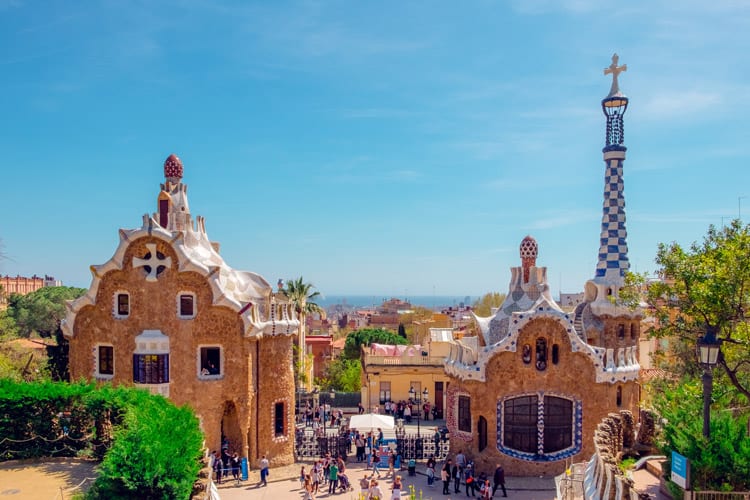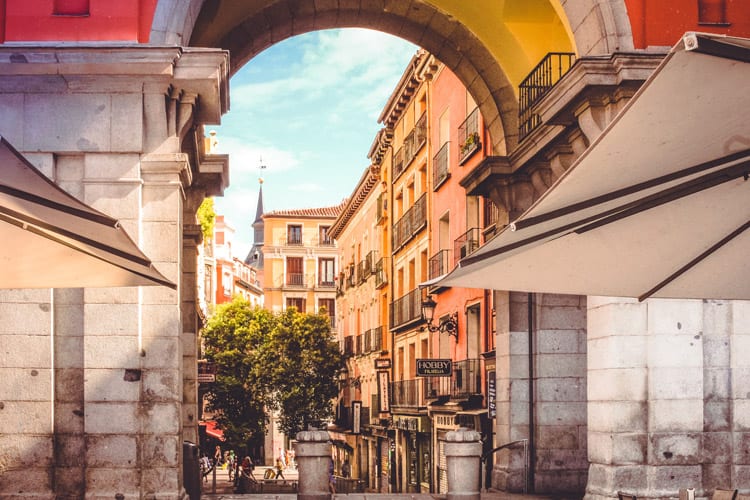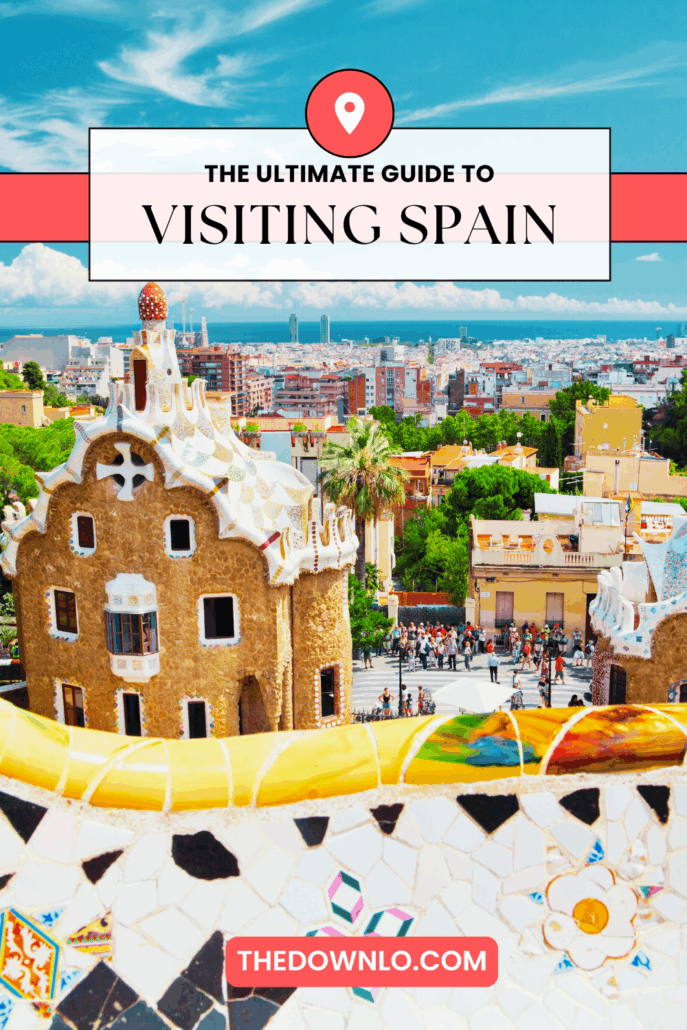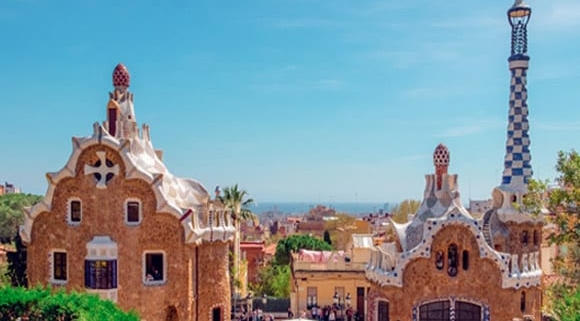Why You Need to Plan a Trip to Spain…Stat

Ah, Spain – the country where sangria flows like water and a mid-afternoon siesta is perfectly acceptable behavior. Bursting with culture, history, and natural beauty, Spain has long been a favorite with travelers. And it’s not hard to see why.
Want to hike through the snow-capped mountains of the Sierra Nevadas? Or explore the museums of Madrid? Or maybe just kick it at the beach in Marbella with a cocktail? Whatever you decide to do it always helps to travel with a plan so you don’t waste precious vacation time.
Here is everything you need to know about planning the perfect trip to Spain.

Where to Stay in Spain
Spain has no shortage of hostels and hotels in its cities and coastal towns. However, if you want to live like a king for a pauper’s price, why not team up with some friends and get yourself a luxury villa in Spain? Villas offer a home away from home rather than just a room in a hotel. Plus, you don’t have to share your space.
If you’d rather something even more lavish, the paradores scattered around the country will blow you away. Paradores are state-run hotels set up in historical buildings. Picture shacking up for a night or two in a castle, convent or palace. You don’t get experiences much more unique than this. Plus, despite the fabulous locations, a night in a parador won’t break the bank.
Where to Go in Spain
This is one of the most difficult things to decide when you start planning your vacation. Spain is one of those countries that has pretty much everything. It has an abundance of cool cities to live in as well as great coastal spots and beautiful national parks. So, where is one to go? Well, it depends what you’re after. In the words of Will.I.Am, let’s break it down.

Beaches in Spain
If you want the best beaches, you should head out to the Spanish Islands. The Canary Islands and Balearic Islands are ringed with golden sand and drenched in sunshine for most of the year. Tenerife tends to be a favorite for its volcanic landscape and black sand beaches. If you would rather stay on the Mainland then head to Galicia, Asturias or Murcia. Here, you’ll find stunning beaches attached to lively seaside towns.
Culture in Spain
For culture in Spain, look to the cities. There are lots of countries that have one impressive city that everyone goes to; and then a bunch of other non-descript cities whose only visitors are tourists who got lost on the way to that impressive city.
Spain is not one of these countries.
Madrid, Barcelona, Valencia, Granada and Seville, are all incredible hubs of culture and excitement.
Madrid is best for those seeking museums and galleries. As Spain’s capital city, it is best placed to tell the nation’s history. Then again, Bilbao is where the spectacular Guggenheim Museum can be found. So maybe go there instead – or as well…
Granada, on the other hand, is all about aesthetics. The city is peppered with beautiful Islamic art and is home to the insanely impressive Alhambra Palace. You have to see the palace – it’s unreal.
Perhaps the most popular destination in the country, Barcelona boasts Gaudís iconic (but unfinished) Sagrada Familia cathedral. If you’re looking for arty shots for your ‘gram, you’ll find them in Barcelona. In the evenings, Barcelona becomes party central with crowds of young people spilling out of chic bars.
Adventures in Spain
Are you the kind of person who can never sit still? Don’t worry, Spain has loads of places that’ll get the adrenaline junkies hyped. Malaga’s El Caminto del Rey (King’s Path) is a wooden boardwalk that clings to face of a craggy cliff. My advice – don’t look down.
The Camino de Santiago is also a great place to get your stride on. The path was originally used as a pilgrimage route to Santiago de Compostela. Nowadays, the Camino still sees the occasional through hiker, but its main visitors are cultural and outdoor travelers. The entire path would take around two months to complete, but you can spend just a few days exploring it.
If wildlife is your bag, the Someido Nature Park is teeming with fauna. Brown bears are the stars of this show, but foxes, wolves and a range of different birds can also be found.

Off the Beaten Path
For those who like to escape the crowds, Segovia, just an hour from Madrid, is ideal for lazy meandering. In terms of attractions, the town has a castle and a Roman Aqueduct to check out. But, the main allure is simply the peacefulness that pervades Segovia.
Cartagena is another hidden gem that gets far fewer visitors than it deserves. Its crowning feature is a Roman Amphitheatre, but it also has a palace and an archaeology museum. If you’re a fan of old stuff (wild horses couldn’t keep me away from a good collection of ruins) then you will love the area.

Food in Spain
There’s a lot more to Spanish cuisine than just tapas – but that’s a good place to start! Tapas reigns supreme over Spain’s gastronomy scene. Pintxos are a Basque variation on Tapas and are best sampled in San Sebastian in the País Vascos region.
For more Spanish goodies, I recommend you head south to Valencia, a.k.a the home of paella. If you’ve never encountered paella, it is a rice dish filled with meat, seafood, and veggies, and seasoned with saffron. Stuff yourself at lunch time and then sleep it off with an afternoon siesta, just like the locals do.
Best Time to Go to Spain
Spain is a dish best served hot. This means you want to go when the sun is out. In the North, April through to September sees the best weather while in the South, visiting times are ideally between March and October. It is worth noting that the heat in the South in July and August can be oppressive. Accommodation prices are also hiked up during this time because of the school holidays. Basically, if you want good weather but also off-peak prices, the best months to travel to Spain are June or September. Have you got all of that? Good. Now, you’re ready to plan your dream vacation to Spain
Spain Travel Tips Will Help You Plan the Perfect Trip
From the sun-kissed beaches of the Balearic Islands to the historic streets of Seville, Spain offers a tapestry of experiences that cater to every kind of traveler. Whether you’re indulging in tapas in a bustling Madrid plaza, marveling at Gaudí’s masterpieces in Barcelona, or hiking the scenic trails of the Camino de Santiago, Spain invites you to immerse yourself in its rich culture and diverse landscapes.
Remember, the best adventures often lie just beyond the well-trodden path. So, venture into the lesser-known towns, engage with locals, and let the rhythm of Spanish life guide your journey. ¡Buen viaje!
Like It? Pin It!















Leave a Reply
Want to join the discussion?Feel free to contribute!